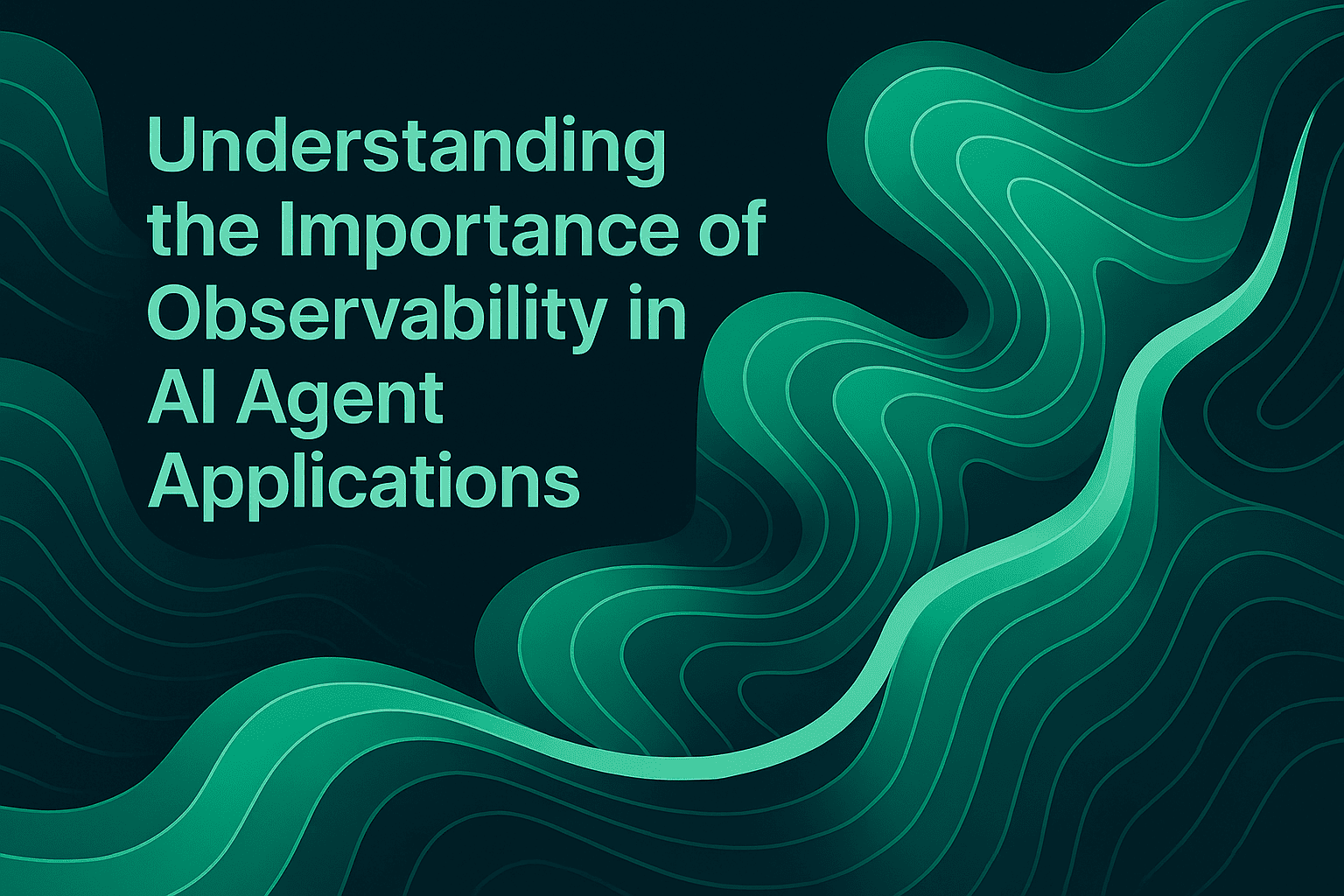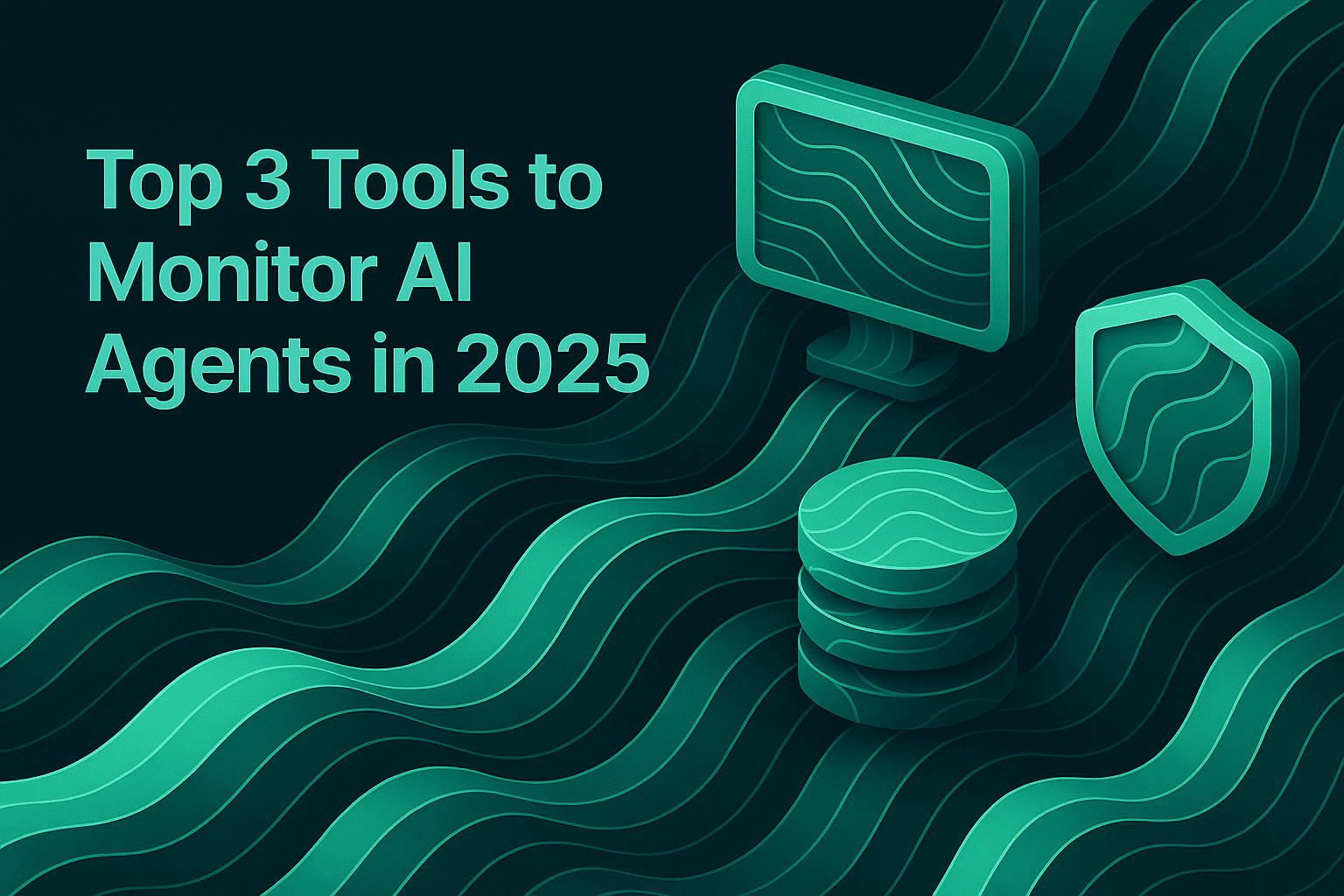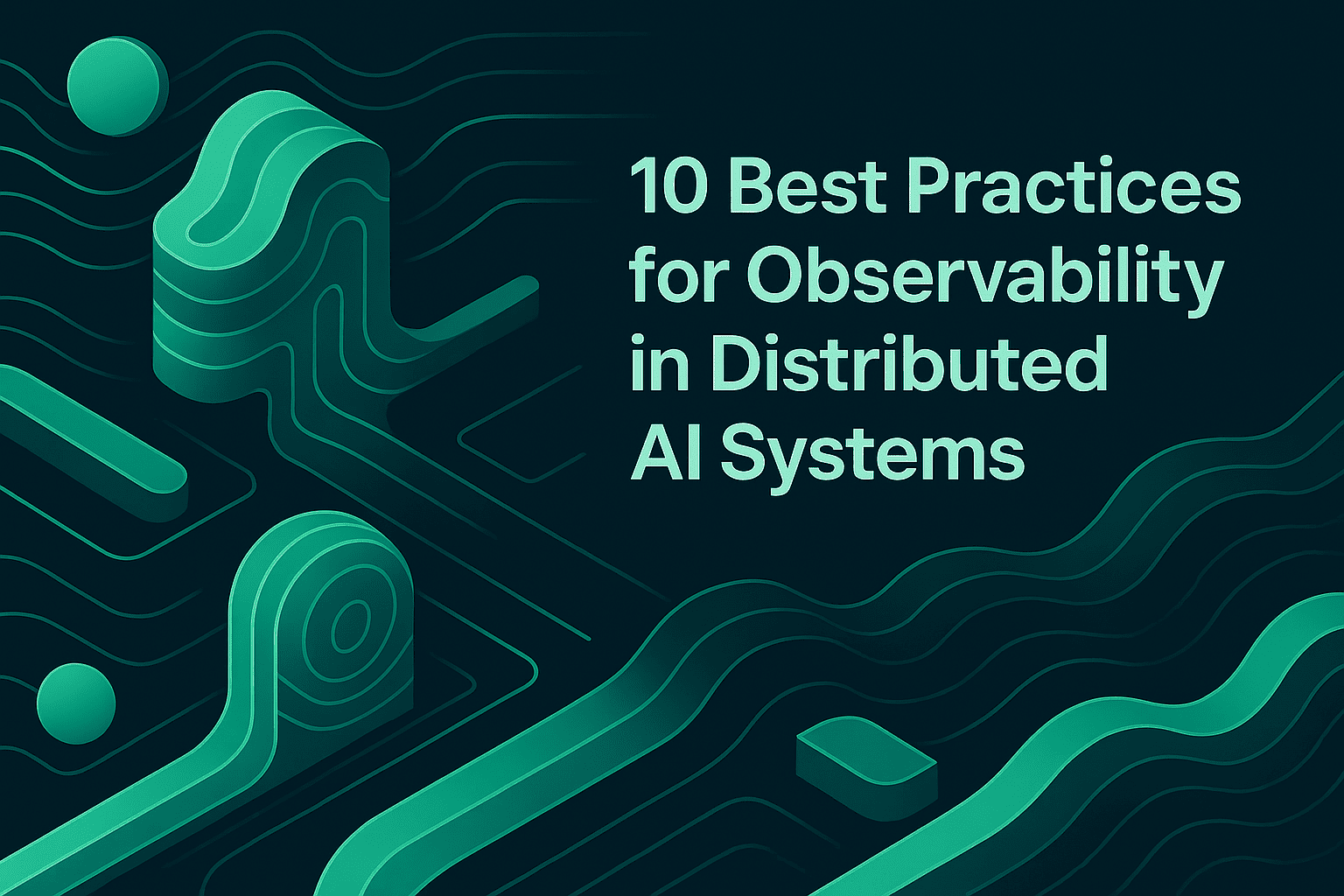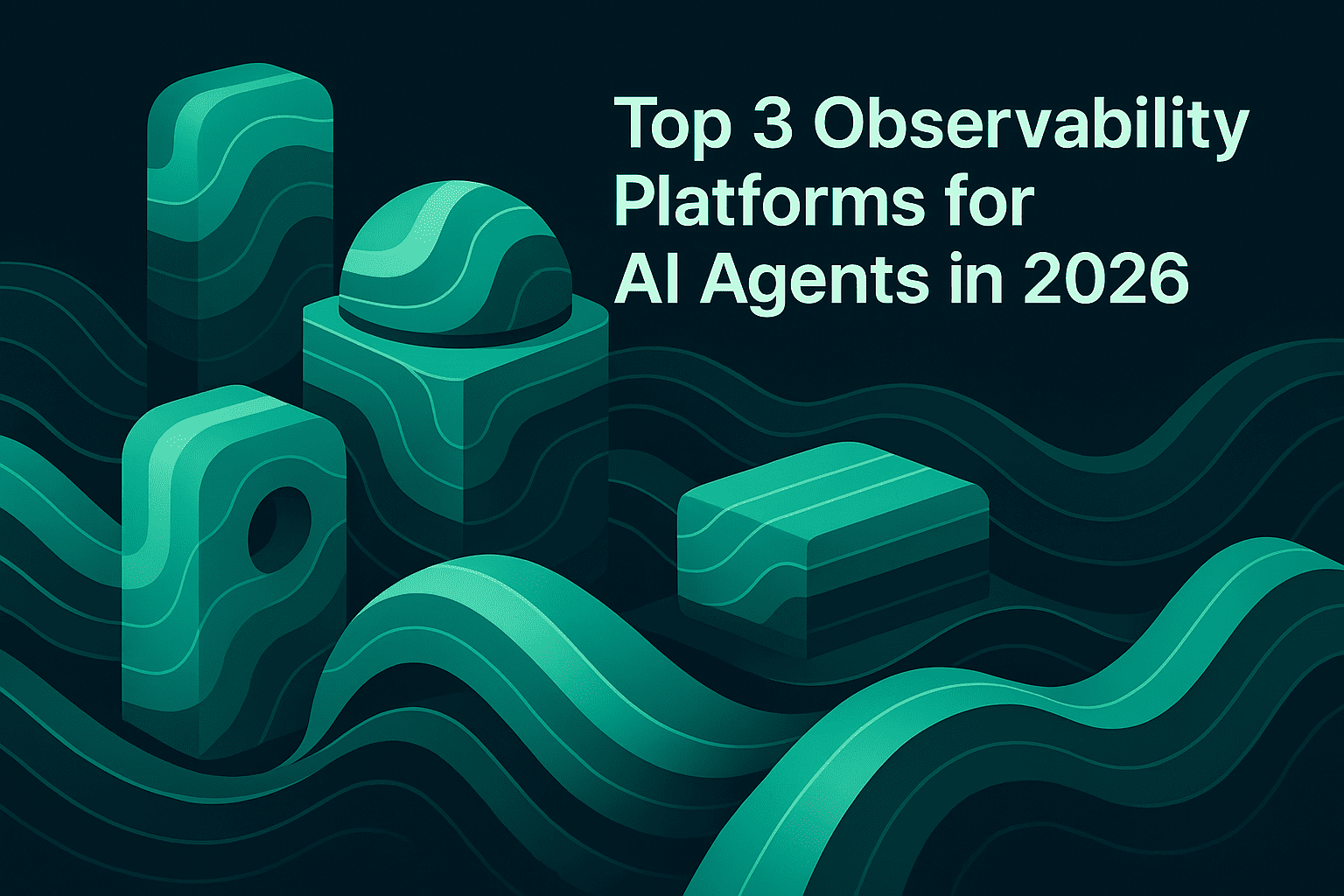Understanding the Importance of Observability in AI Agent Applications

AI agents are powering autonomous workflows and intelligent decision-making across industries. However, with this evolution comes the critical need for AI agent observability, especially when scaling these agents to meet enterprise needs. Without proper monitoring, tracing, and logging mechanisms, diagnosing issues, improving efficiency, and ensuring reliability in AI agent-driven applications becomes challenging.
The non-deterministic nature of AI agents creates unique monitoring challenges that traditional software observability cannot adequately address. Agents make decisions autonomously, interact with external tools, process unstructured data, and generate outputs that vary even with identical inputs. For organizations deploying production AI agents, observability has transitioned from optional monitoring to a mission-critical requirement.
What is AI Agent Observability
AI agent observability is the practice of achieving deep, actionable visibility into the internal workings, decisions, and outcomes of AI agents throughout their lifecycle, from development and testing to deployment and ongoing operation. This extends beyond traditional application monitoring to address the unique characteristics of agentic systems.
An AI agent is an application that uses a combination of LLM capabilities, tools to connect to the external world, and high-level reasoning to achieve a desired end goal or state. Alternatively, agents can be treated as systems where LLMs dynamically direct their own processes and tool usage, maintaining control over how they accomplish tasks.
Observability for these systems encompasses several key aspects:
Continuous Monitoring: Tracking agent actions, decisions, and interactions in real time to surface anomalies, unexpected behaviors, or performance drift. This enables teams to identify issues before they cascade into larger problems affecting end users.
Tracing Multi-Step Workflows: AI agents execute complex, multi-step processes involving multiple LLM calls, tool interactions, and decision points. Observability platforms must provide distributed tracing that visualizes every step in the agent's lifecycle, from initial input through tool usage and external API interactions to final output.
Evaluation and Governance: Observability builds on traditional monitoring methods and adds two critical components: evaluations and governance. Evaluations help teams assess how well agents resolve user intent, adhere to tasks, and use tools effectively, while governance ensures agents operate safely, ethically, and in compliance with organizational standards.
Feedback Loops: Given the non-deterministic nature of agents, telemetry serves not only for monitoring and troubleshooting but also as a feedback loop to continuously learn from and improve agent quality by using it as input for evaluation tools.
Core Challenges Without Observability
Production AI agents without comprehensive observability face several critical challenges that can undermine reliability and business value:
Silent Failures and Degradations
In production environments, even small degradations can cascade into major business disruptions, especially when they go undetected. Manual evaluations do not scale, and silent regressions often slip through during model updates, orchestration changes, or prompt tweaks. Without observability, teams rely on users to report issues, a reactive approach that damages user trust and satisfaction.
Cost Escalation
LLMs are stochastic by nature, meaning they are statistical processes that can produce errors or hallucinations. Agents often decide autonomously how many LLM calls or paid external API calls they need to make to solve a task, potentially leading to high costs for single-task executions. The tradeoff between accuracy and costs in LLM-based agents is crucial, as higher accuracy often leads to increased operational expenses.
Without real-time monitoring of model usage and costs, organizations can experience unexpected budget overruns as agents make inefficient decisions about resource utilization.
Debugging Complexity
Agents use multiple steps to solve complex tasks, and inaccurate intermediary results can cause failures of the entire system. When issues occur, engineers need to understand not just what went wrong but why, requiring visibility into the complete decision chain, tool selections, and reasoning processes.
Traditional logging approaches prove insufficient for debugging agent workflows that span multiple models, external APIs, and conditional logic branches. Teams need specialized tracing capabilities that capture the full context of agent execution.
Compliance and Trust Issues
Enterprises require high accuracy, security, observability and auditability(understanding what a program did and why) and steerability, meaning control over agent behavior. Without comprehensive observability, organizations cannot demonstrate compliance with regulatory frameworks or provide the transparency needed for audit trails.
Key Components of AI Agent Observability
Effective observability for AI agents requires several integrated components that work together to provide comprehensive visibility:
Distributed Tracing
Similar to lineage for data pipelines, traces describe each step taken by an agent and can be captured using open source SDKs that leverage the OpenTelemetry framework. One benefit to observing agent architectures is that this telemetry is relatively consolidated and easy to access via LLM orchestration frameworks as compared to observing data architectures where critical metadata may be spread across multiple systems.
Distributed tracing enables teams to visualize every step in an agent's lifecycle, from LLM calls to external API interactions, providing the granular visibility needed for effective debugging and optimization.
Real-Time Metrics and Dashboards
Production observability requires tracking key performance indicators including latency, cost, token usage, and error rates at granular levels. Real-time dashboards enable teams to monitor agent performance across sessions, nodes, and individual spans, providing immediate visibility into system health.
Organizations need to monitor dimensions such as response quality, task completion rates, tool selection accuracy, and user satisfaction to understand holistic agent performance. These metrics should be broken down by user, session, geography, and model version to enable precise optimizations.
Evaluation Frameworks
Once teams have all agent telemetry in place, they can monitor or evaluate it using another AI, a process typically referred to as evaluation. This tactic is excellent for monitoring sentiment in generative responses and assessing dimensions like factual accuracy, relevance, helpfulness, and task adherence.
However, evaluation should not be siloed within data and AI platforms for production use cases since it cannot be tied to the holistic performance of the agent at scale or used to root-cause and resolve issues in a scaled context. Comprehensive evaluation frameworks integrate seamlessly with production observability to provide continuous quality assessment.
Automated Alerting and Anomaly Detection
Proactive monitoring requires automated detection of anomalies and performance degradations. AI-driven anomaly detection automatically learns normal behavior patterns and flags deviations across metrics and logs, enabling teams to respond to issues before they impact users.
Alerts should be configurable based on custom thresholds and integrate with collaboration tools like Slack and incident management platforms like PagerDuty to ensure rapid response.
Benefits of Implementing Observability
Comprehensive observability delivers tangible benefits that directly impact AI agent reliability and business outcomes:
Reduced Mean Time to Resolution
When issues occur in production, distributed tracing enables teams to quickly identify the root cause by examining the complete execution path. Automated diagnostics dramatically speed up issue resolution, with some organizations reporting up to 60% of bugs being automatically fixed through AI-driven remediation.
Improved Agent Performance
Observability provides the data needed for data-driven optimization. Teams can identify performance bottlenecks, optimize resource allocation, and improve decision-making logic based on production insights. Analytics derived from production data help measure quality through user feedback and model-based scoring over time and across different versions.
Cost Optimization
Real-time monitoring of token usage, API calls, and computational resources enables teams to identify and eliminate inefficiencies. Organizations can optimize the tradeoff between agent accuracy and operational expenses by understanding how agents allocate resources across different tasks.
Enhanced Compliance and Trust
Comprehensive audit trails showing what agents did and why enable organizations to meet regulatory requirements and build user trust. Tracing agent decisions back to their sources ensures accountability and supports governance frameworks needed for responsible AI deployment.
Continuous Quality Improvement
Observability creates a feedback loop where production insights drive continuous improvement. Teams can curate datasets from production logs, identify edge cases, and incrementally update test suites based on real-world agent behavior. This ensures agents evolve to handle new scenarios effectively.
Best Practices for AI Agent Observability
Implementing effective observability requires following proven practices that address the unique characteristics of agentic systems:
Adopt Open Standards
Given that observability and evaluation tools for GenAI come from various vendors, establishing standards around the shape of the telemetry generated by agent applications is important to avoid lock-in caused by vendor or framework-specific formats. The GenAI observability project within OpenTelemetry is actively working on defining semantic conventions to standardize AI agent observability, providing a foundational framework for ensuring interoperability across different frameworks.
Instrument from Development Through Production
Observability should begin during development, not after deployment. Teams that instrument agents early can identify issues during experimentation and testing, reducing the likelihood of production failures. Simulation and evaluation during development provide baseline performance metrics that production monitoring can validate.
Monitor at Multiple Granularities
Effective observability operates at multiple levels: system-level metrics showing aggregate performance, session-level tracking for complete user interactions, and span-level details for individual operations. This multi-granular approach enables teams to identify issues at the appropriate level of abstraction.
Implement Continuous Evaluation
Production monitoring should include automated evaluations that assess agent outputs against quality criteria. Running custom evaluations tailored to specific business logic helps catch silent regressions introduced during prompt changes, model updates, or orchestration modifications.
Maintain Data Control and Security
Organizations handling sensitive data need observability solutions that provide data control. Storing telemetry within your own warehouse or lakehouse rather than third-party platforms ensures compliance with data governance policies while enabling integration with existing data infrastructure.
How Maxim AI Enables Comprehensive Observability
Building production-ready AI agents requires observability that spans the complete lifecycle from development through deployment and continuous operation.
Pre-Production Testing: Before deploying agents to production, teams can leverage AI-powered simulations to test behavior across hundreds of scenarios and user personas. Simulating customer interactions and evaluating agents at a conversational level provides confidence in agent reliability before users encounter issues.
Production Monitoring: Maxim's observability suite provides comprehensive distributed tracing for both LLM and traditional system calls, enabling teams to track, debug, and resolve live quality issues. Real-time dashboards monitor latency, cost, token usage, and error rates at granular levels, while automated evaluations measure in-production quality based on custom rules.
Intelligent Alerting: Configure real-time alerts to act on production issues with minimal user impact. Custom alerts integrate with Slack, PagerDuty, and other collaboration tools to ensure rapid response when anomalies are detected.
Data-Driven Improvement: Create multiple repositories for multiple applications with production data that can be logged and analyzed. Datasets can be curated with ease for evaluation and fine-tuning needs, enabling continuous improvement based on real-world agent performance.
Multi-Framework Support: Maxim provides seamless SDK integrations for frameworks like CrewAI, LangGraph, and OpenAI Agents, with enterprise-grade features including OpenTelemetry compatibility, in-VPC deployment options, and SOC 2 compliance.
Cross-Functional Collaboration: Unlike observability solutions that provide control exclusively to engineering teams, Maxim's user experience is anchored to how product and engineering teams collaborate seamlessly. Custom dashboards enable teams to create insights across agent behavior with fine-grained flexibility, while flexible evaluators support both automated and human-in-the-loop assessments.
Conclusion
As AI agents transition from experimental prototypes to production systems powering critical business workflows, observability has evolved from a nice-to-have capability to an operational imperative. The unique characteristics of agentic systems (non-deterministic behavior, multi-step reasoning, autonomous tool usage, and dynamic decision-making) create monitoring challenges that traditional observability approaches cannot adequately address.
Comprehensive observability provides the visibility needed to understand agent behavior, diagnose issues rapidly, optimize performance, control costs, and maintain compliance. Organizations that implement robust observability practices position themselves to deploy AI agents with confidence, knowing they can detect and resolve issues before they impact users.
Success requires adopting open standards, instrumenting agents throughout the development lifecycle, monitoring at multiple granularities, implementing continuous evaluation, and maintaining data control. Teams that embrace these practices will build AI agents that deliver consistent value while maintaining the trust and transparency required for enterprise adoption.
Ready to implement comprehensive observability for your AI agents? Schedule a demo to see how Maxim AI's end-to-end platform provides visibility across the complete agent lifecycle, or sign up to start monitoring your agents in production today.


